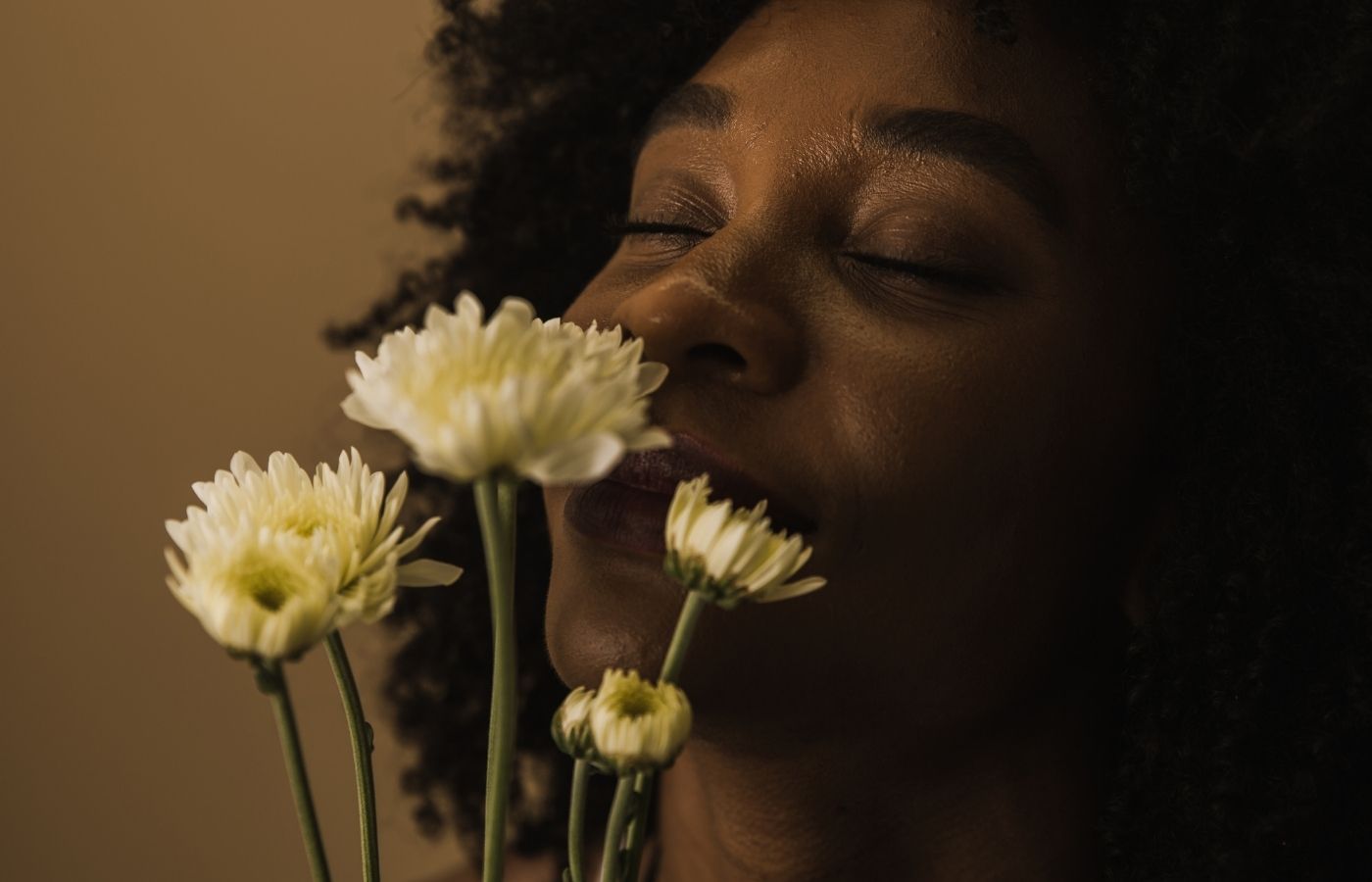Of the oodles of scents out there, the one that is perhaps the most divisive is patchouli. This musky-sweet scent is either loved or despised. We are in the former camp. But if you’re of the latter and a skeptic, you’ve come to the right place.
If you’re patchouli-curious, let us change your mind about this special scent and explain why our rendition will defy your expectations.

Why did we create Patchouli & Copal?
Following the great feedback we received about our Palo Santo & Frankincense blend, we developed a slight obsession for all the deep, woody, earthy smells. A patchouli and copal blend was an obvious next step.
The final blend is comprised of patchouli, copal, and frankincense essential oils, plus tonka bean seed extract for a little je ne sais quoi. Our Patchouli & Copal is a soothing woody balsamic scent that is rich and musky, with a smoky sweetness.

What does patchouli smell like?
If you haven’t experienced it before, you may be wondering what patchouli smells like. Patchouli is an earthy, woody, musky scent that’s tremendously rich and deep. Many people find the muskiness most pronounced, but it also has delightful sweet-herbaceous and spicy notes.
Why do some people dislike patchouli?
To understand why patchouli has such a divisive effect on us, we must first understand the anatomy of a scent. Similar to enjoying a glass of wine, where there is a sort of sensory journey, fragrance too has a layered experience. Perfumers designate these layers as the top, heart, and base.
Patchouli is a base note and often used as a fixative in perfumes. This means that it is used to create longevity in a scent. If you’ve ever spilled patchouli oil on a piece of clothing, you know that it’s got serious staying power.
Pure patchouli may come across as off-putting to your senses. This is why blending with other scents can give patchouli a broader appeal.

The beauty of blending
Many Humble Brands scents are made from blends of two or more essential oils and botanical extracts. The brilliant thing about creating a custom blend is that it allows us to make something unique and strike the perfect balance of aromatics for universal enjoyment.
Blending for balance
To ebb patchouli’s inherent potency, we’ve found the more mild aromatics of copal, which tend to be sweet, woody, and slightly spicy-peppery, to beautifully complement the deep earthy scent. A light touch of frankincense, which shares many similarities to patchouli and copal, lends pine-like notes while contributing its own smooth resinous properties.
Our secret to intensifying the sweetness is the intoxicating aroma of tonka bean extract. The result is a complex and nuanced yet seamless scent that hits all the right notes.
Learn more about how we create our scents.

Scents smell different on the skin
A scent applied to your skin can smell dramatically different than it does in the package thanks to your body’s unique chemistry and environmental conditions. Scent application to the underarms, in particular, can alter a scent1.
The receptors in your nose may also play a role in how a scent is perceived, creating a myriad of experiences when we smell the same scent on ourselves versus others1.
Heat and moisture on the skin (like the skin under your arms) can actually turn up the volume of a scent, and it's possible that microbial activity can affect a scent as well2. So when you need it most, it's possible your favorite deodorant may be amplified, helping you smell amazing.
Keep this in mind when you smell a scent on someone else too. What smells great on a friend may not mesh with your chemistry and vice versa. You may be surprised that Patchouli & Copal is perfectly-suited to you.
Learn more about finding the right scent in our article: You Might be Wearing the Wrong Scent.

Sourcing of patchouli and copal
What is patchouli?
Patchouli oil comes from a perennial plant native to Southeast Asia. Our dark patchouli hails from Indonesia where the harvested leaves are shade cured and aged before distilling to increase the richness and yield. Metal stills are specifically chosen to ensure the warm, dark color in the final product.
Patchouli has a reputation for being the “scent of the sixties”, but it also has a storied history as it has been beloved by fine perfumers for centuries. You might be surprised how common patchouli is in today’s perfumes.

What is copal?
Copal is a balsamic resin wild-harvested with great care from trees in Brazil. Collected through a tap, it takes several days to collect from a single tree. When the taps are removed, the holes are sealed with clay. Trees are typically left to rest for three years between extractions.
For centuries, copal has been revered as a ceremonial incense in Mexico, especially during Día de los Muertos. It is also a traditional shamanistic oil for spiritual purification and the cultivation of a peaceful heart.
Want even more juicy background details on our ingredients?
Learn about frankincense.
Learn about tonka bean.
Learn about our simple ingredients promise.

The aromatherapeutic properties of patchouli and copal
Patchouli is thought to be grounding, balancing, calming, and mood harmonizing. The warming, sweet aroma of copal has traditionally been used to promote feelings of relaxation and centeredness. We hope this scent blend brings moments of peace, harmony, and calm to your day.
If you’re looking for a warm, earthy scent that will last all day, Patchouli & Copal might just be the perfect fit. Get all the carefree vibes without the intrusive aromatics that unfairly give it a bad wrap.
Try our Patchouli & Copal scent in Original Formula and Vegan & Sensitive Skin deodorant, as well as our moisturizing bar soap.





